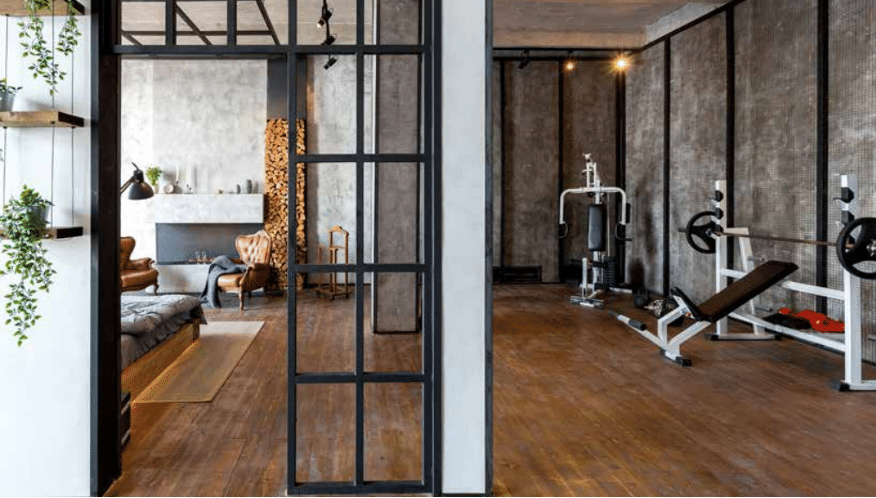Winter in the UK brings with it the charm of potential snowy scenes, cosy fires, and warm jumpers. However, as the cold sets in, homeowners often encounter a series of challenges. From the annoying drafts to the dreaded damp patches, the winter months can test the resilience of even the most well-maintained homes. This guide aims to shed light on common winter home issues UK residents face, providing insights and solutions to ensure your home remains warm and problem-free throughout the frosty season. Whether you're a first-time homeowner or have braved many winters, there's always something new to learn about keeping your home in top shape during the chilliest time of the year.
Why Winter Presents Unique Challenges: Understanding Winter Homes in the UK
The UK winter, with its unique blend of wet, cold, and often unpredictable weather patterns, poses a set of challenges to homeowners that are quite distinct from those experienced in other seasons. But what is it about these conditions that exacerbate common winter home issues?
The sudden shift from wet to freezing conditions can have detrimental effects on a home's infrastructure. Water that seeps into cracks and crevices can freeze, leading to expansion and causing further damage, whether it's in the brickwork, piping, or roofing.
Then there's the prolonged dampness. The UK's winter isn't just cold; it's often wet and humid. This consistent moisture can lead to mould and mildew problems, especially in homes that are not adequately ventilated. Damp conditions, combined with the reduced sunlight of shorter days, create the perfect breeding ground for these unwelcome guests.
Additionally, the frequency of storms and gales during the winter months can test the structural integrity of homes. Roofing tiles, fences, and garden structures can easily become casualties of these harsh weather conditions.
It's also worth noting the strain on home energy systems. With reduced daylight hours and colder temperatures, households are more reliant on artificial lighting and heating, which can not only drive up energy bills but also highlight any inefficiencies or faults in a home's electrical or heating systems.
In essence, the climatic conditions of a UK winter push homes to their limits. As a homeowner, understanding these challenges is the first step in mitigating their effects and safeguarding your property against the common winter home issues they can cause.
The Five Main Culprits
As temperatures drop and the elements become harsher, many homes begin to show signs of strain. Let's delve into some of the most common winter home issues that UK residents face.
Damp and Mould Growth: The persistent wet weather and reduced ventilation opportunities during winter make dampness a typical problem in UK homes. When moisture lingers, it can lead to mould growth, which not only damages surfaces but can also pose health risks. Especially vulnerable areas include bathrooms, basements, and any poorly ventilated spaces. Regularly checking for signs of moisture and ensuring proper ventilation can help counteract this issue.
Frozen and Burst Pipes: A sudden drop in temperature can freeze the water inside pipes, causing them to expand and potentially burst. This can result in significant water damage and costly repairs. It's crucial to insulate exposed pipes, especially those outside or in unheated areas of the home, to prevent this common winter home issue.
Roof and Gutter Damage: Snow and ice can accumulate on roofs, adding extra weight and strain. When this snow melts, it can refreeze in gutters, causing ice dams that prevent proper drainage. This can lead to water seeping into the home or damaging the gutters and roof itself. Regularly clearing snow and checking for ice dams can help prevent these problems.
Drafts and Insulation Problems: The cold winter winds can quickly highlight any gaps in a home's defences, with drafts making rooms chilly and increasing heating costs. Windows, doors, and loft spaces are common culprits. Ensuring homes are well-insulated and sealing any gaps can make a significant difference in comfort and energy efficiency.
Boiler and Central Heating Malfunctions: Boilers and heating systems are under increased pressure during the cold months, working overtime to keep homes warm. This can highlight underlying issues or create new ones if systems aren't regularly serviced and maintained. Annual checks and services can help ensure they run smoothly throughout winter.
Being proactive and addressing these home issues early can save homeowners time, money, and a lot of stress. A well-maintained home not only stands up better to the challenges of winter but also provides a safer and more comfortable environment for its inhabitants.
Tips to Prevent Common Winter Home Issues
With a little preparation, you can safeguard your home against the majority of common winter issues. Let's dive into some preventive measures that can help you enjoy a trouble-free winter season.
Combat Dampness and Mould:
Ventilate: Ensure rooms, especially bathrooms and kitchens, are well-ventilated. Use extractor fans or open windows for a short period daily.
Dehumidifiers: Consider using a dehumidifier in problem areas to reduce excess moisture.
Regular Checks: Inspect walls, especially in basements and lofts, for any early signs of dampness or mould and treat them promptly.
Protect Against Frozen and Burst Pipes:
Insulate: Wrap exposed pipes in insulation or use heating tapes.
Dripping Taps: In extremely cold weather, let your taps drip slightly to keep water moving and prevent freezing.
Main Stopcock: Know where your water main stopcock is in case of a burst pipe.
Guard Your Roof and Gutters:
Regular Inspections: Before winter sets in, inspect your roof for any damages or potential weak spots.
Gutter Cleaning: Ensure gutters are clear of leaves and debris to facilitate smooth water flow.
Trim Trees: Cut back any tree branches hanging close to the roof to prevent accumulation and potential damage.
Tackle Drafts and Improve Insulation:
Draftproof: Use draftproofing around doors and windows to seal any gaps.
Loft Insulation: Ensure your loft or attic is well-insulated to prevent heat loss.
Curtains and Rugs: Thick curtains and rugs can add an extra layer of insulation and keep your rooms warmer.
Maintain Your Boiler and Heating System:
Annual Service: Schedule a professional service for your boiler before winter starts.
Bleed Radiators: Ensure radiators are working efficiently by bleeding them to release any trapped air.
Emergency Numbers: Keep the number of a trusted plumber or heating engineer handy in case of unexpected malfunctions.
Proactive care can make all the difference in preventing common winter home issues. By taking these steps, homeowners can ensure their property remains a safe haven throughout the frosty months. Remember, a stitch in time saves nine – especially when it comes to maintaining our homes during the cold season.
Addressing and Repairing the Damage
While preventive measures are essential, the reality is that sometimes, despite our best efforts, winter-related damages occur. Recognising these common winter home issues and addressing them swiftly can save homeowners both time and money. Here are the remedies for the typical challenges winter might throw your way:
Dampness and Mould Growth:
Identification: The first step is recognising the problem. Look out for dark or discoloured patches on walls, ceilings, and even furniture.
Clean Up: Use a mould and mildew remover (available at most hardware stores) or a homemade solution of equal parts water and white vinegar. Always wear gloves and ensure the area is well-ventilated.
Prevent Recurrence: Once cleaned, use a dehumidifier or moisture absorbers to keep the area dry.
Frozen and Burst Pipes:
Thawing Frozen Pipes: Use a hairdryer, hot water bottle, or heated cloth, working from the tap towards the frozen area. Never use open flames.
Handling Burst Pipes: First, shut off the water supply to prevent further damage. Then, call a professional plumber to assess and repair the damage.
Roof and Gutter Damage:
Roof Repairs: For minor issues, such as replacing a few tiles, you might handle it yourself if you're comfortable. However, for more significant damage or leaks, it's best to consult a roofing specialist.
Gutter Maintenance: If your gutters are blocked or damaged, remove debris and consider using a gutter repair kit or calling in a professional.
Drafts and Insulation Problems:
Sealing Gaps: Use caulk or sealant for any cracks or gaps in your doors and windows.
Replace or Repair: Sometimes, the best solution for old, drafty windows is a replacement. Consider double-glazed windows for better insulation.
Boiler and Central Heating Malfunctions:
Initial Checks: Ensure the boiler has power and the thermostat is set correctly. Sometimes, the solution is as simple as reigniting the pilot light or resetting the system.
Professional Help: If you're unsure or the problem persists, it's crucial to get a heating engineer involved. Regular servicing can help prevent many common issues.
The key to dealing with any common winter home issues is prompt action. The sooner you address the problem, the easier (and often cheaper) it is to rectify. Armed with this knowledge, homeowners can face the winter months confidently, knowing they're well-equipped to handle any challenges that come their way.
Conclusion
Winter, with its crisp mornings and cosy evenings, can be a season of joy and celebration. However, it's also a time when our homes are tested by the elements. As we've explored, a range of common winter home issues can arise during these colder months. By being aware of potential problems and taking proactive measures, homeowners can prevent many of these challenges. And, if issues do emerge, quick action combined with the right knowledge can make all the difference. So, as the temperature drops and the nights draw in, let's ensure our homes remain the safe and warm sanctuaries they should be, no matter what winter throws our way.


















